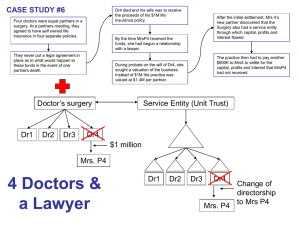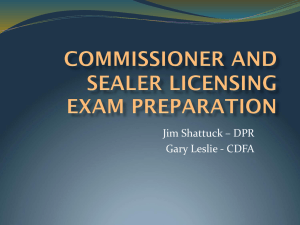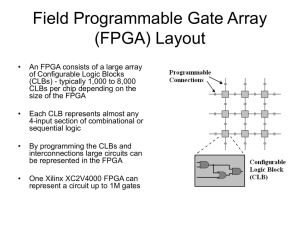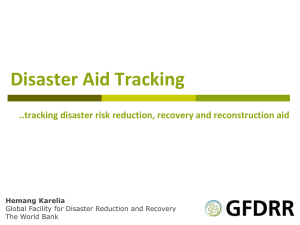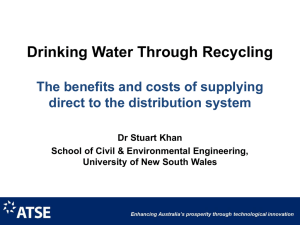FPGA - PhD in Computer and Control Engineering
advertisement
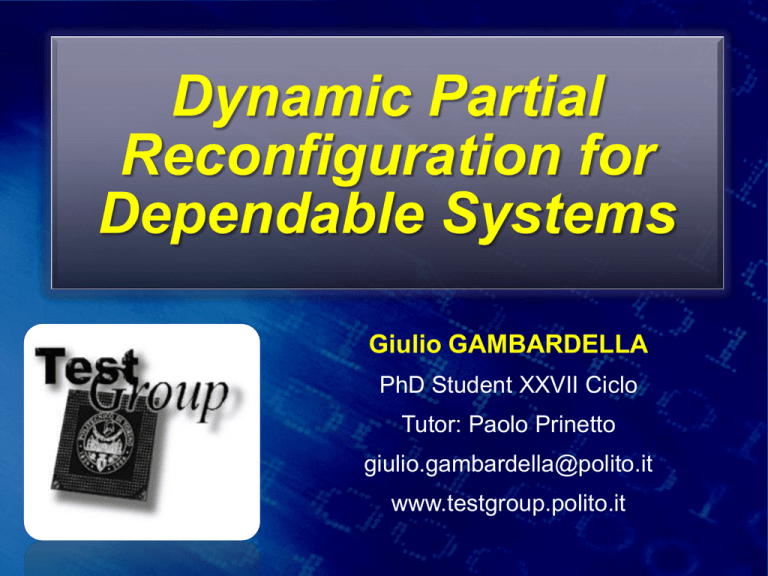
Dynamic Partial Reconfiguration for Dependable Systems Giulio GAMBARDELLA PhD Student XXVII Ciclo Tutor: Paolo Prinetto giulio.gambardella@polito.it www.testgroup.polito.it DPR for Dependable systems • Dynamic Partial Reconfiguration (DPR) is the ability of a programmable device (i.e., FPGA) to dynamically change some of its selected portions while the rest is unchanged and operating Slide #2 DPR for Dependable systems • Dynamic Partial Reconfiguration (DPR) is the ability of a programmable device (i.e., FPGA) to dynamically change some of its selected portions while the rest is unchanged and operating Slide #2 DPR for Dependable systems • Dynamic Partial Reconfiguration (DPR) is the ability of a programmable device (i.e., FPGA) to dynamically change some of its selected portions while the rest is unchanged and operating – Often used to hardware accelerate tasks by ondemand reconfiguration with specific IP-Cores Slide #2 DPR for Dependable systems • Dynamic Partial Reconfiguration (DPR) is the ability of a programmable device (i.e., FPGA) to dynamically change some of its selected portions while the rest is unchanged and operating But: – Is the DPR process itself dependable? – Is it possible to exploit DPR to improve FPGA robustness by mitigating Non-functional properties (i.e., temperature, power, aging) effects? Slide #2 Mitigating SEE in DPR process ISSUE: • When performing partial reconfiguration, wrong data can be written in the FPGA configuration memory GOAL: • Increase the dependability of the partial reconfiguration process by avoiding misreconfigurations MY CONTRIBUTIONs: • Detecting faults before configuring the FPGA [9] or correcting a misconfiguration [6] with minimal impact Slide #3 Mitigating SEE – D2PR [9] Original Partial Bit File Bit File split into logical Blocks CRC generated for each word in critical Block Partial Bit File reassembled with CRC CRC Signatures are inserted to protect the bitstream addressing and control words, avoiding reconfiguration with faulty data Slide #4 Mitigating SEE – Zipstream [6] A special partial bitstream, for each reconfigurable partition, is compressed and stored internally the FPGA, to quickly reconfigure if a faulty bitstream has been read Slide #5 Aging mitigation by DPR ISSUE: • NBTI induces a degradation of the robustness of the cells by decreasing its Static Noise Margin, especially if the data stored is statically 1 or 0 GOAL: • Mitigate aging effects in SRAM-based FPGA configuration memory MY CONTRIBUTION: • By taking advantage of the unused hardware resources and allocating functions to be implemented uniformly into available resources Slide #6 Aging mitigation by DPR By ensuring the 50% probability of having ‘0’ in each configuration memory bits, by switching among two status (Work and Rest), providing the minimum aging effect [5] increasing the SNM Slide #7 NFPs mitigation by DPR ISSUE: • Non-functional properties (i.e., temperature, power, aging) variations are affecting systems performances and reliability, modifying systems behavior GOAL: • Increase Systems-on-Programmable-Chip dependability exploiting DPR MY CONTRIBUTION: • SATTA [13]: a methodology to predict critical path delay changing in FPGA-based system to avoid Transition Delay Faults (TDFs) due to NFPs, integrated into state-of-the-art FPGA design tools Slide #8 SATTA Architecture Critical Path FF FF CLK Manager Manager Temperature Sensor Slide #9 TDF Sensor FPGA SATTA Architecture Critical Path FF Sensor predicting TDFs occurrence FF CLK Manager Manager Temperature Sensor Slide #9 TDF Sensor FPGA SATTA Architecture Critical Path FF FF CLK Manager Manager Temperature Sensor Slide #9 TDF Sensor Manager reducing working frequency when TDFs can occur, increasing FPGA frequency in safe conditions SATTA Architecture Critical Path FF FF CLK Manager Manager Temperature Sensor Slide #9 TDF Sensor Temperature sensor to smartly switch-on FPGA TDF sensors SATTA Architecture Critical Path FF FF CLK Manager Manager Temperature Sensor Slide #9 TDF A Manager able to Sensor modify the CLK frequency, predicting the main cause of the delay increasing, using FPGA for proper models aging and temperature Publications – ISI Journals PUBLISHED: [13] “SATTA: a Self-Adaptive Temperature-based TDF awareness methodology for dynamically reconfigurable FPGAs”, S. Di Carlo, G. Gambardella, P. Prinetto, D. Rolfo, P. Trotta; ACM Transaction on Reconfigurable Technology and Systems [14] “SA-FEMIP: A Self-Adaptive Features Extractor and Matcher IPCore Based on Partially Reconfigurable FPGAs for Space Applications”, S. Di Carlo, G. Gambardella, P. Prinetto, D. Rolfo, P. Trotta; IEEE Transactions On Very Large Scale Integration (VLSI) Systems SUBMITTED: [15] “MarciaTesta++: A tool for the automated generation of SoftwareBased Self Tests for both Instruction and Data Cache Memories”, S. Di Carlo, G. Gambardella, M. Indaco, P. Prinetto, D. Rolfo; Springer Design Automation for Embedded Systems Publications – Conferences 2014 [10] “On Enhancing Fault Injection's Capabilities and Performances for Safety Critical Systems”, S. Di Carlo, G. Gambardella, P. Prinetto, F. Reichenbach, T. Lokstad, G. Rafiq; Proceedings of the Euromicro Conference on Digital System Design (DSD), 2014 [11] “A novel methodology to increase fault tolerance in autonomous FPGA-based systems”, S. Di Carlo, G. Gambardella, P. Prinetto, D. Rolfo, P. Trotta, A. Vallero; Proceedings of the International OnLine Testing Symposium (IOLTS), 2014 [12] “A cloud-based Cyber-Physical System for environmental monitoring”, T. Sanislav, G. Mois, S. Folea, L. Miclea, G. Gambardella, P. Prinetto; Proceedings of the Mediterranean Conference on Embedded Computing (MECO), 2014 Publications – Conferences 2013 [8] “FEMIP: A high performance FPGA-based features extractor & matcher for space applications”, S. Di Carlo, G. Gambardella, P. Lanza, P. Prinetto, D. Rolfo, P. Trotta; Proceedings of the Field Programmable Logic and Applications (FPL), 2013 [9] “Dependable Dynamic Partial Reconfiguration with minimal area & time overheads on Xilinx FPGAS”, S. Di Carlo, G. Gambardella, M. Indaco, P. Prinetto, D. Rolfo, P. Trotta; Proceedings of the Field Programmable Logic and Applications (FPL), 2013 Publications – Conferences 2012 [5] “NBTI Mitigation by Dynamic Partial Reconfiguration”, S. Di Carlo, S. Galfano, G. Gambardella, M. Indaco, P. Prinetto, D. Rolfo, P. Trotta; Proceedings of the 13th Biennal Baltic Electronics Conference (BEC), 2012 [6] “ZipStream: improving dependability in Dynamic Partial Reconfiguration”, S. Di Carlo, G. Gambardella, T. Huynh Bao, P. Prinetto, D. Rolfo, P. Trotta; Accepted at 7th IEEE International Design and Test Symposium (IDT), 2012 [7] “SAFE: a Self Adaptive Frame Enhancer FPGA-based IP-core for real-time space applications”, S. Di Carlo, G. Gambardella, P. Prinetto, D. Rolfo, P. Trotta; Accepted at 7th IEEE International Design and Test Symposium (IDT), 2012 Publications – Conferences 2011 [1] “MarciaTesta: an automatic generator of test programs for microprocessors' data caches”, S. Di Carlo, G. Gambardella, M. Indaco, P. Prinetto, D. Rolfo; Proceeding of the 20th Asian Test Symposium (ATS), 2011 [2] “A unifying formalism to support automated synthesis of SBSTs for embedded caches”, S. Di Carlo, G. Gambardella, M. Indaco, P. Prinetto, D. Rolfo; Proceedings of the 9th East-West Design & Test Symposium (EWDTS), 2011 [3] “Validation & Verification of an EDA automated synthesis tool”, S. Di Carlo, G. Gambardella, M. Indaco, P. Prinetto, D. Rolfo; Proceedings of the 6th International Design and Test Workshop (IDT), 2011 [4] “An Area-Efficient 2-D Convolution Implementation on FPGA for Space Applications”, S. Di Carlo, G. Gambardella, M. Indaco, P. Prinetto, D. Rolfo, G. Tiotto; Proceedings of the 6th International Design and Test Workshop (IDT), 2011 Q&A Any Question?
